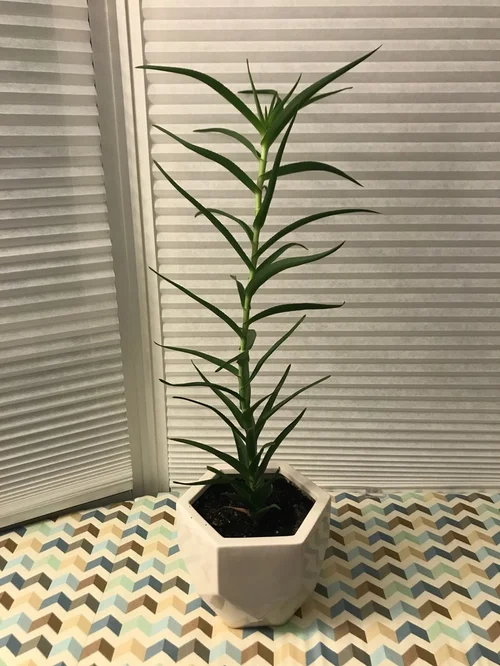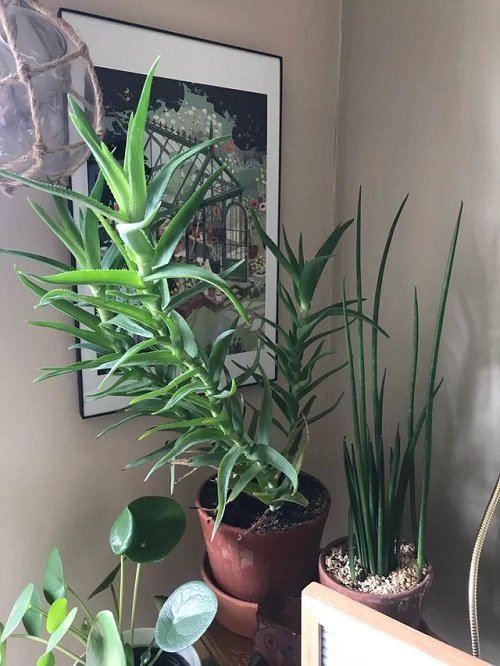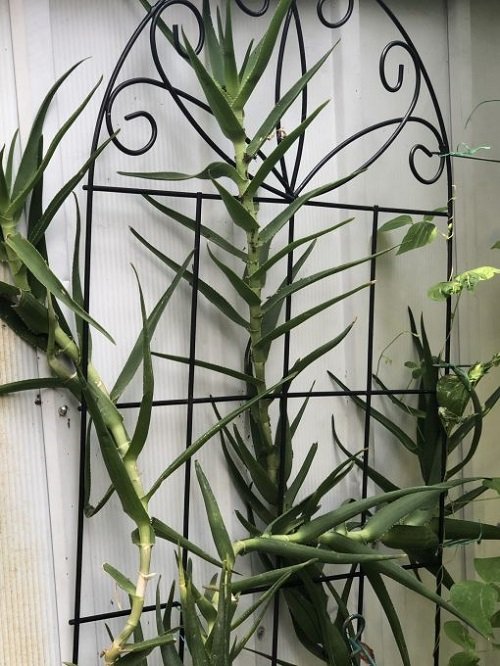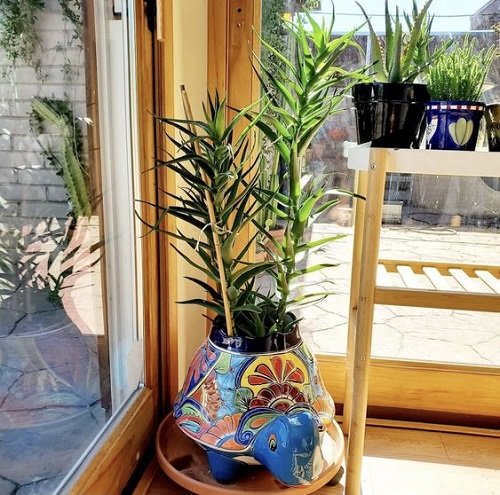Learn How to Grow Climbing Aloe Indoors as a Vine is the best way to show off these pants in your garden and home in an original way!
You can train a plant if you love vines but want them to be succulents! Here are some tricks How to Grow Climbing Aloe Indoors as a Vine!
Information about climbing aloe
Climbing aloe (Aloe ciliaris) is a member of the Asphodelaceae family and is characterized by slender, drooping stems that can grow up to 20-30 feet long. Its lance-shaped leaves are typically green, but sometimes with a bluish tinge.
The plant produces clusters of tubular, orange-red to scarlet flowers that attract pollinators such as birds and insects. Its narrow leaves have small, soft teeth or bristles on the edges and, like other succulents, can store water.
Proper pot size for growing climbing aloe
Typically, a pot that is 1 to 2 inches larger in diameter than the plant’s root ball is ideal. This size gives the roots enough room to grow without becoming too large, which can lead to waterlogging and root rot.
For a young or small climbing aloe, a pot with a diameter of around 15 to 20 cm should be sufficient. You may need to repot the plant every few years as it grows. When repotting, choose a pot one size larger than the current one. This gradual increase in size helps maintain the balance between root space and soil moisture, which is critical to plant health.
How to Grow Climbing Aloe Indoors as a Vine
Growing climbing aloe (Aloiampelos ciliaris) in a way that mimics the growth pattern of a vine requires a combination of traditional care and some creative techniques.
1. Support and training
- Grid or wire frame: Install a trellis or wire frame near the plant. As it grows, gently wrap or tie the stems around the structure. This encourages the plant to grow upward and spread like a vine.
- Hanging baskets: Plant climbing aloes in a hanging basket. Allow the shoots to grow downward, creating a cascading, vine-like effect.
2. Directional training
- Guided Growth: Use soft garden ties or twine to guide new shoots in the desired direction. This helps create a more controlled, vine-like appearance.
- clipping: Prune the plant regularly to encourage branching. More branches mean more shoots that can be trained to grow like a vine.

3. Using gravity
Try an unconventional approach by planting climbing aloe in an upside-down or sloping planter. This allows the plant to naturally grow downward, mimicking the growth of a vine.
4. Creating a Lattice Framework
Construct a DIY trellis structure around the plant. Weave the stems through the trellis as they grow to encourage horizontal and vertical growth.
5. Companion planting
Plant climbing aloe next to real vining plants. This allows it to grow together with the vines and resemble the growth patterns of its neighbors.
6. Light manipulation
Use grow lights to encourage the plant to grow toward or away from a light source to create a tendril effect. You can also use a well-lit window for this.
7. Moss sticks and coconut fiber
Use moss or poles wrapped with coconut fiber. These provide a natural, moisture-retaining support structure for the vines to cling to and climb.

By using these creative methods, you can effectively teach your climbing aloe to grow like a vining plant, adding a fascinating and unique aspect to indoor gardening. Remember:
- Patience is key: Training climbing aloe to grow like a vine takes time and patience.
- Monitor and adjust: Regularly check the plant’s progress and adjust your training techniques as necessary.
 careyfashion.com Carey Fashion
careyfashion.com Carey Fashion





